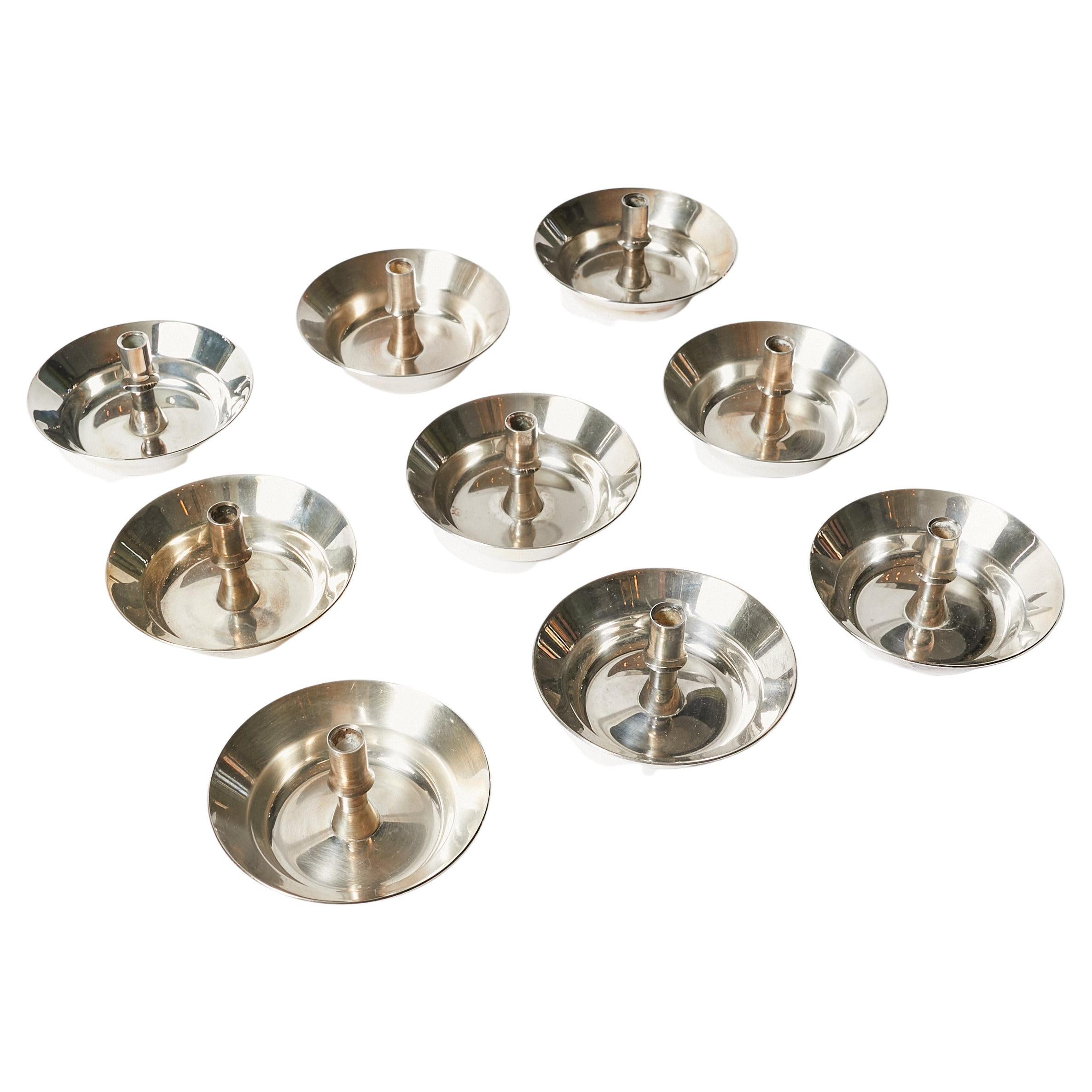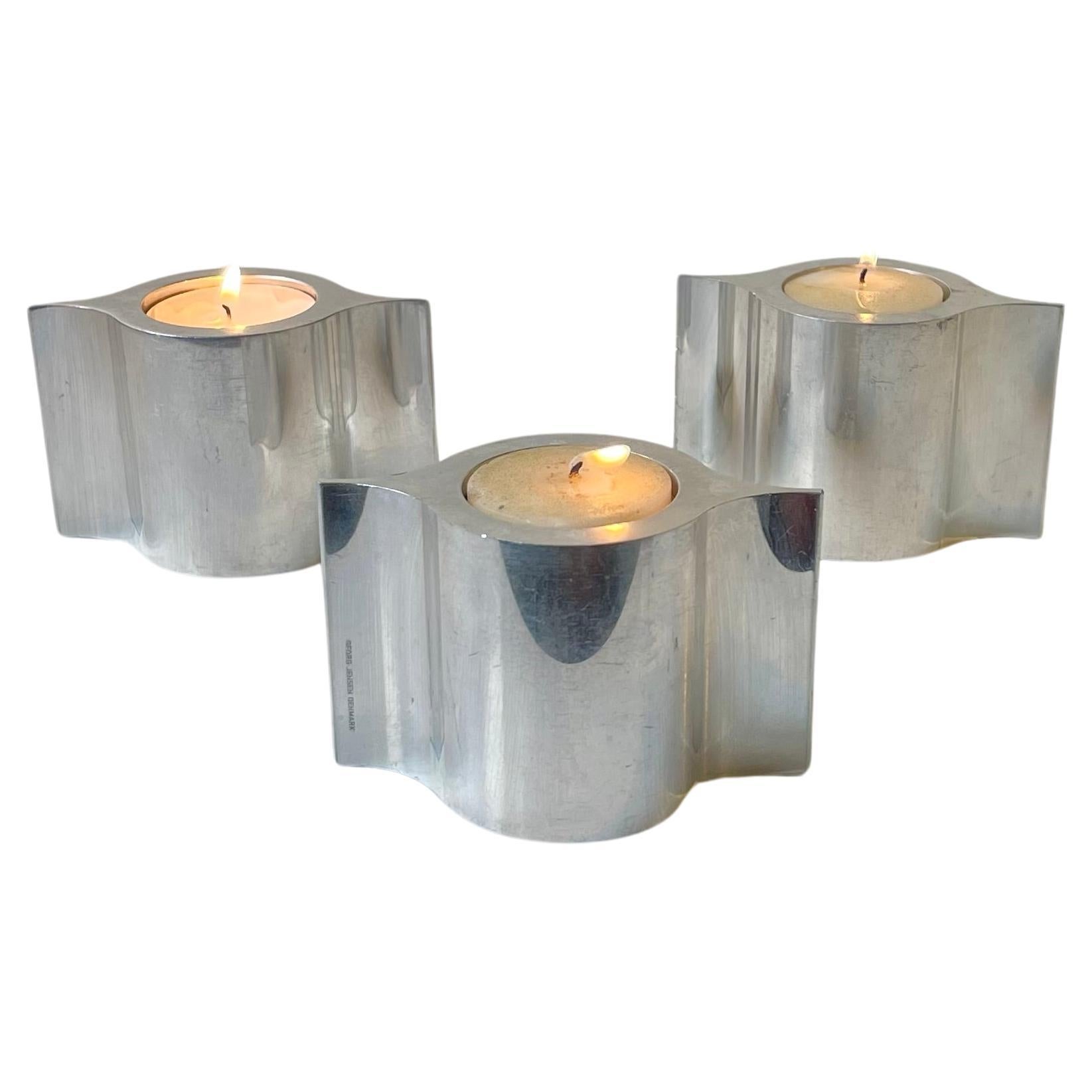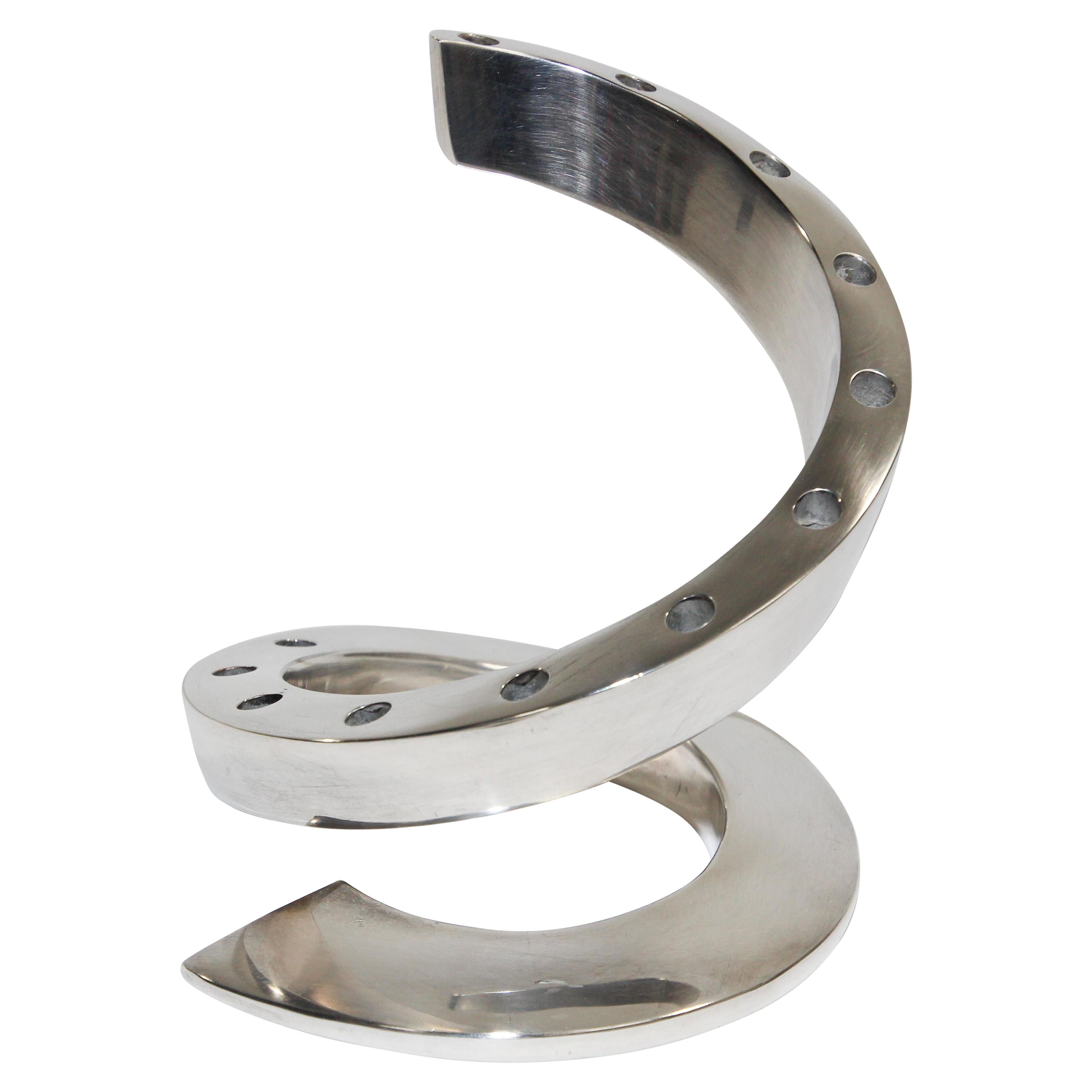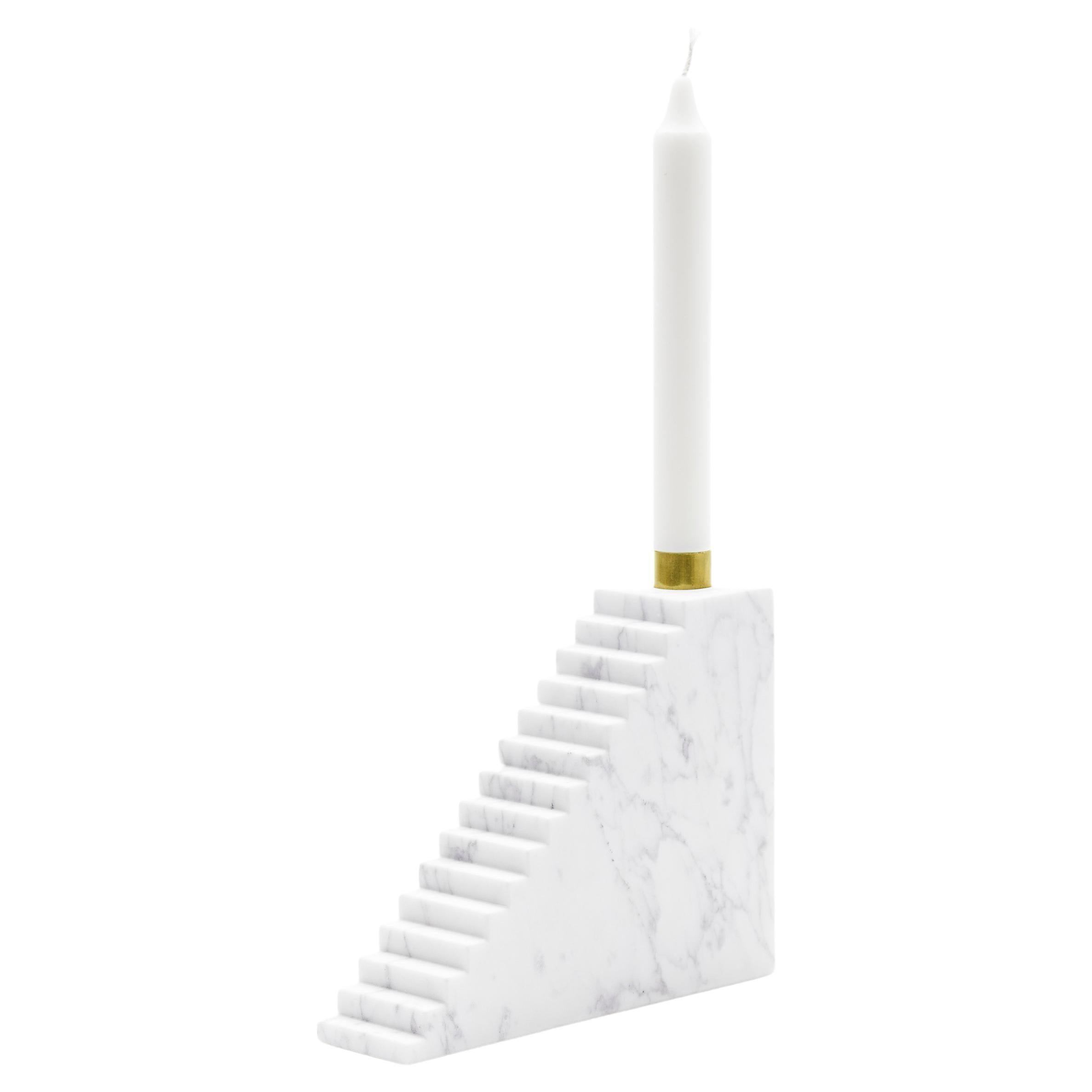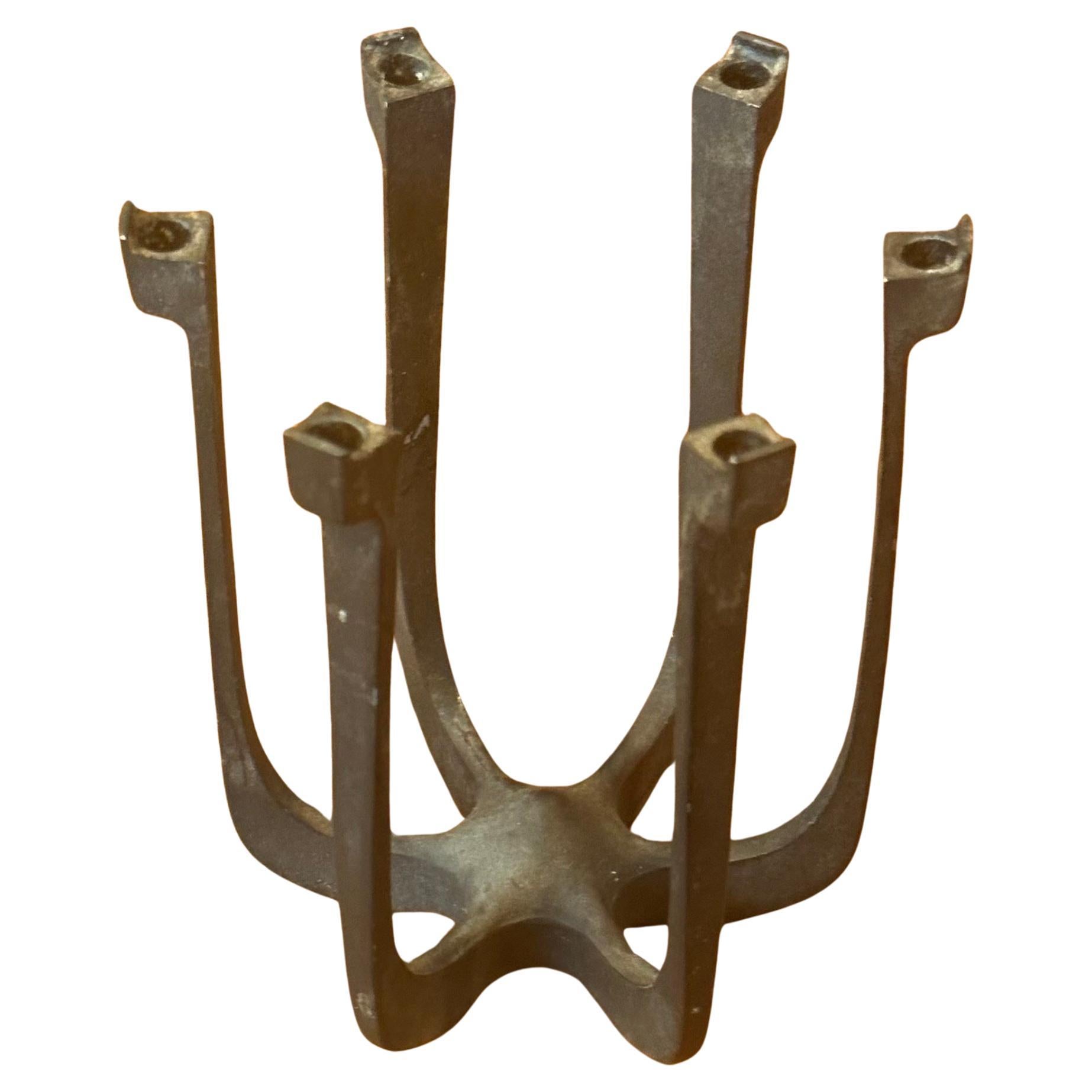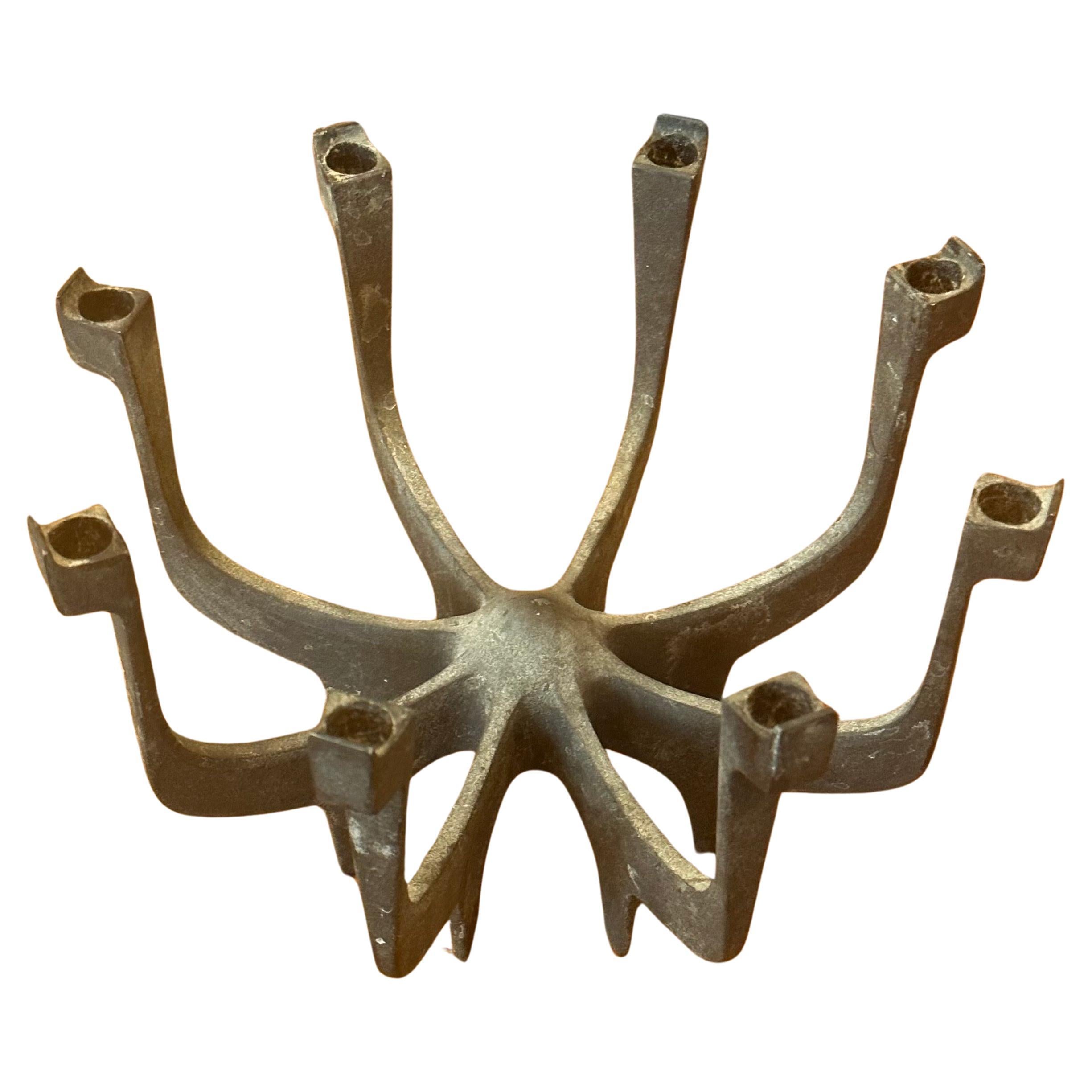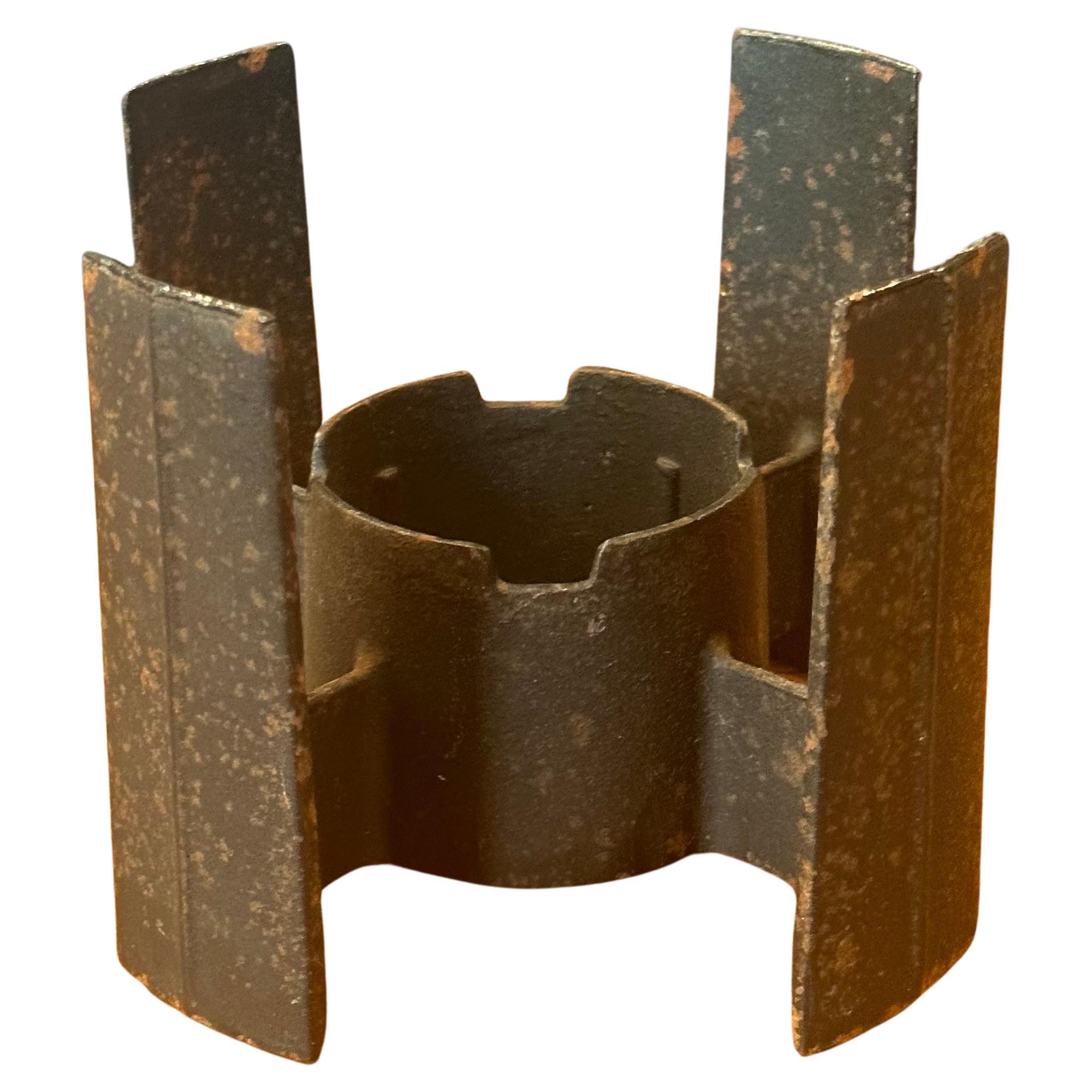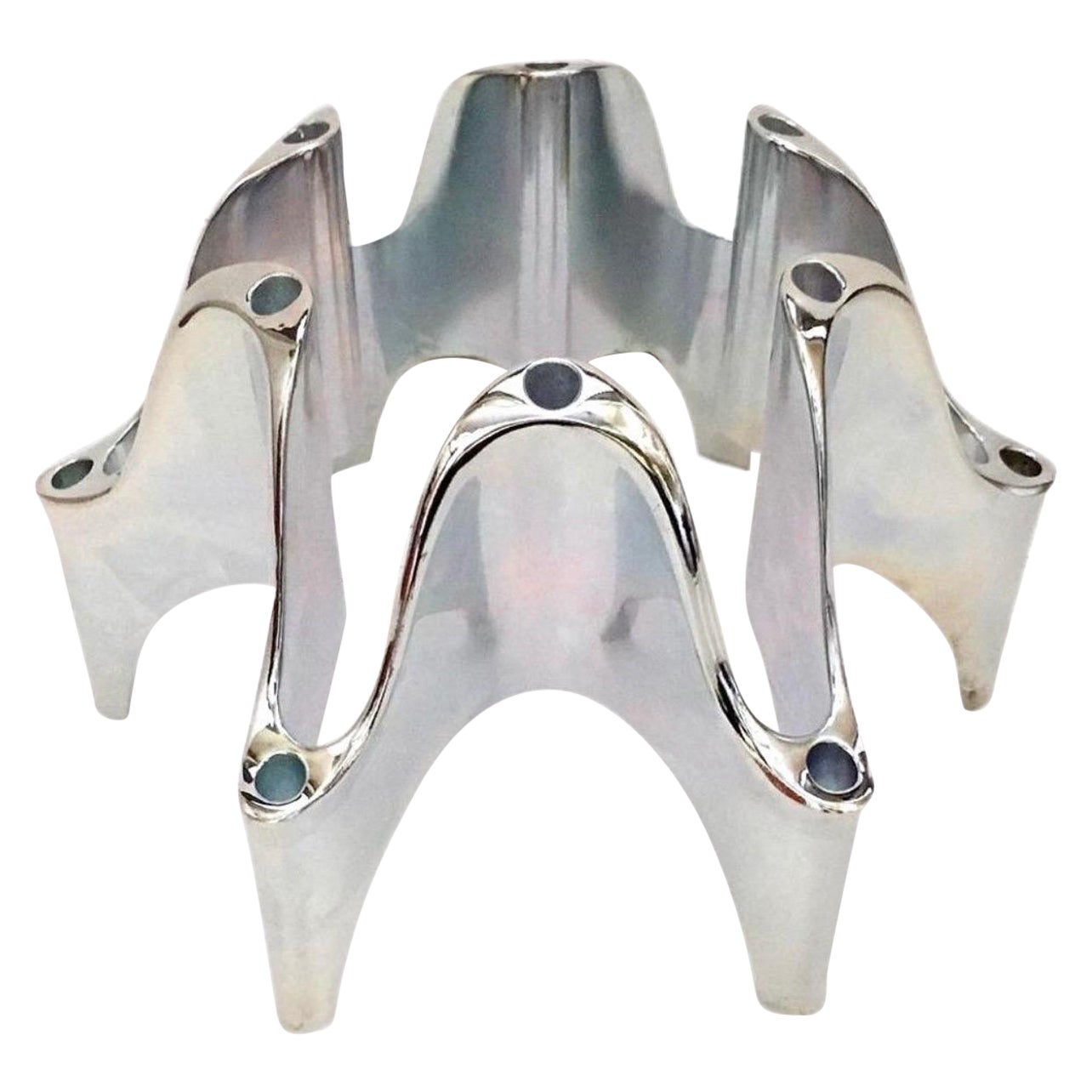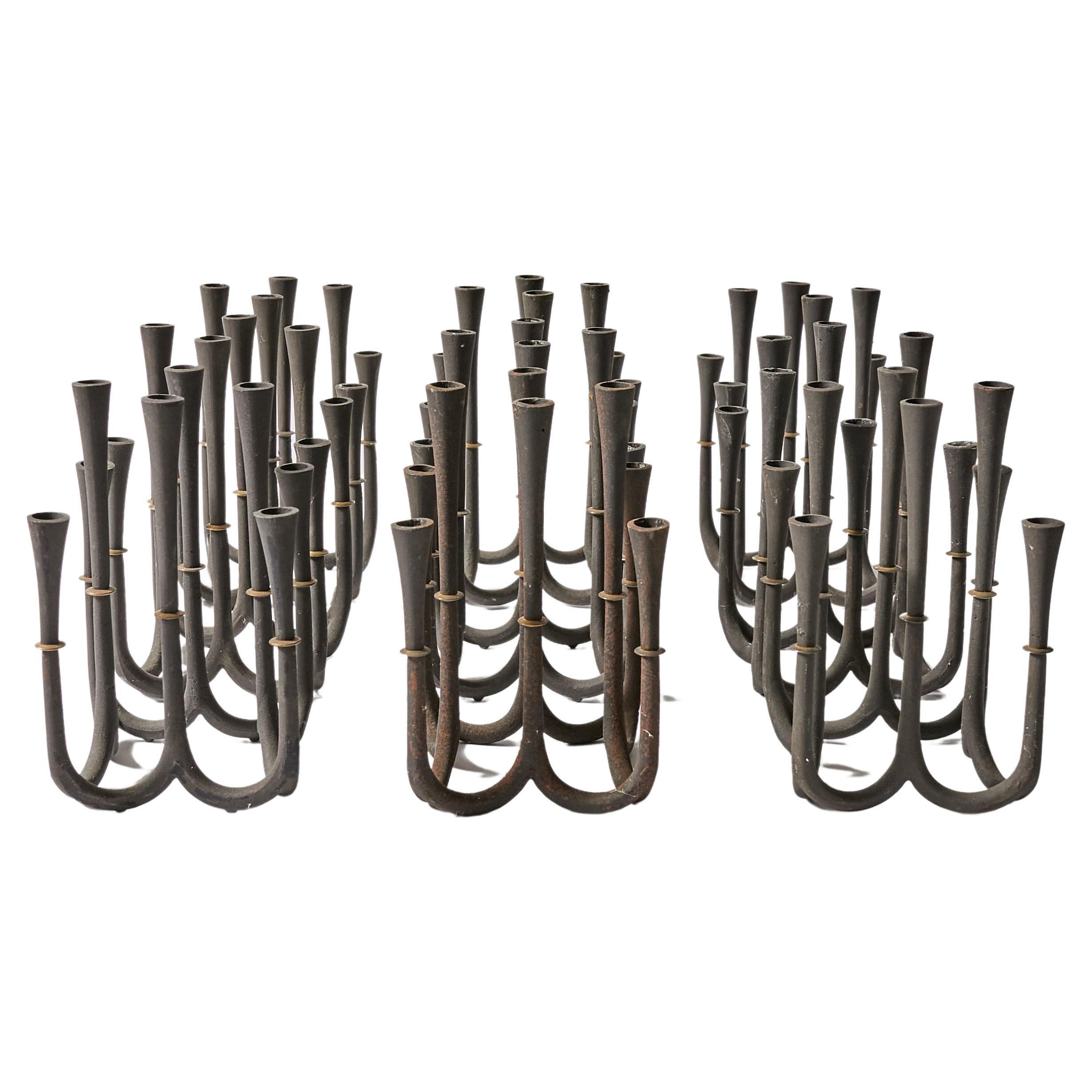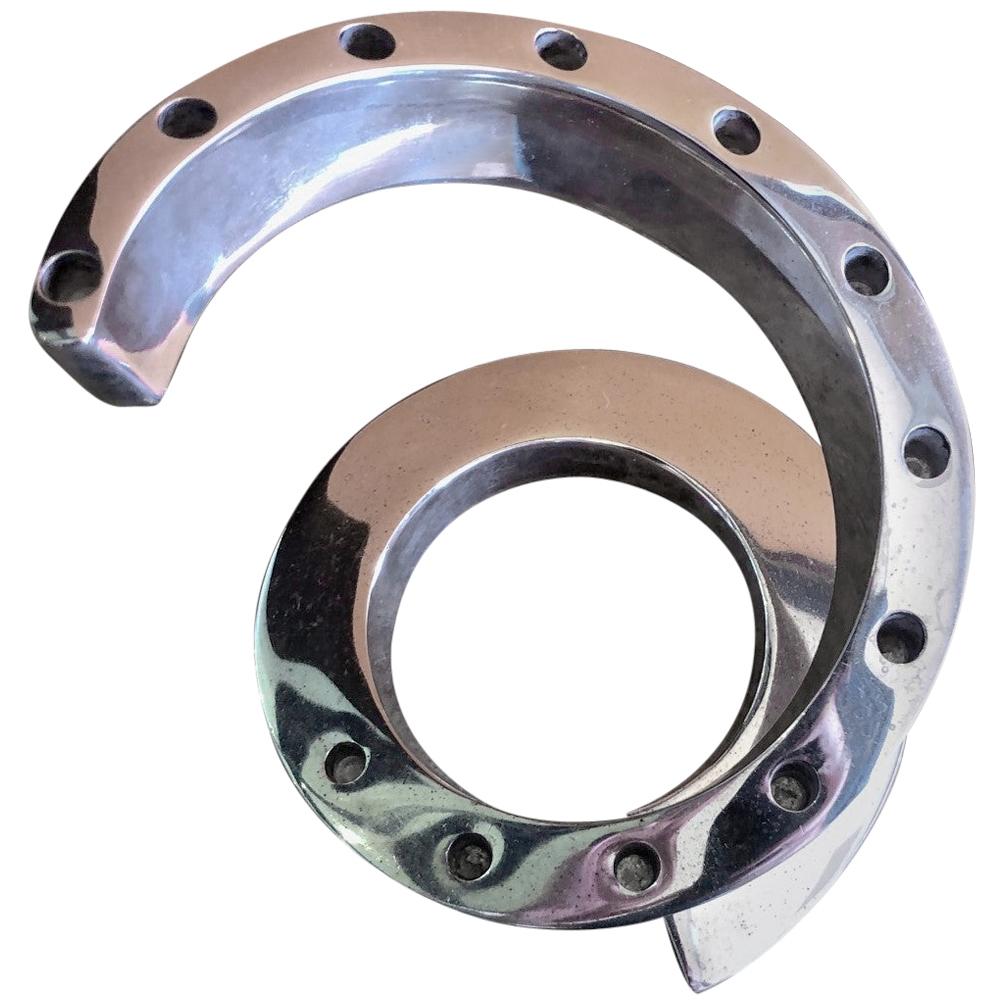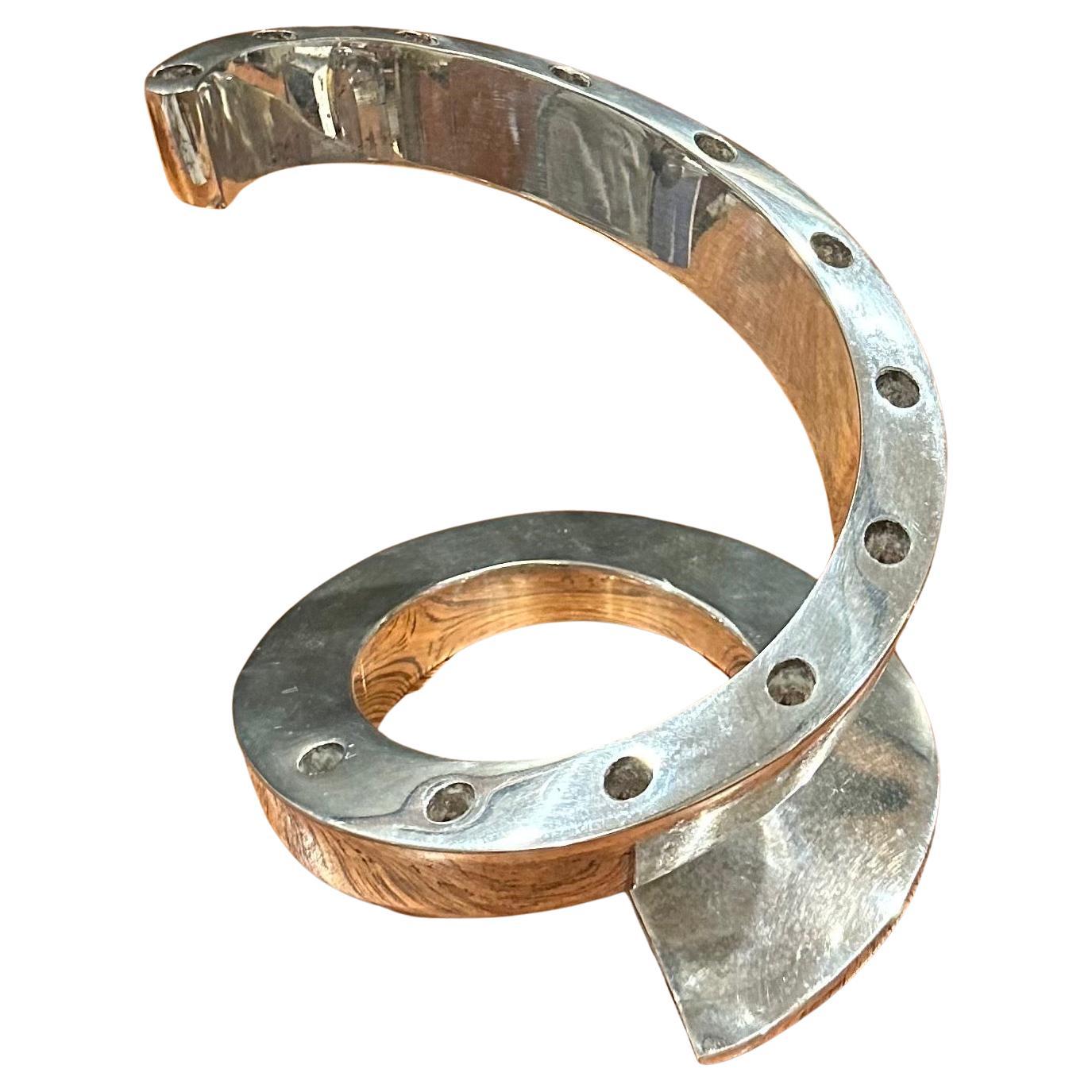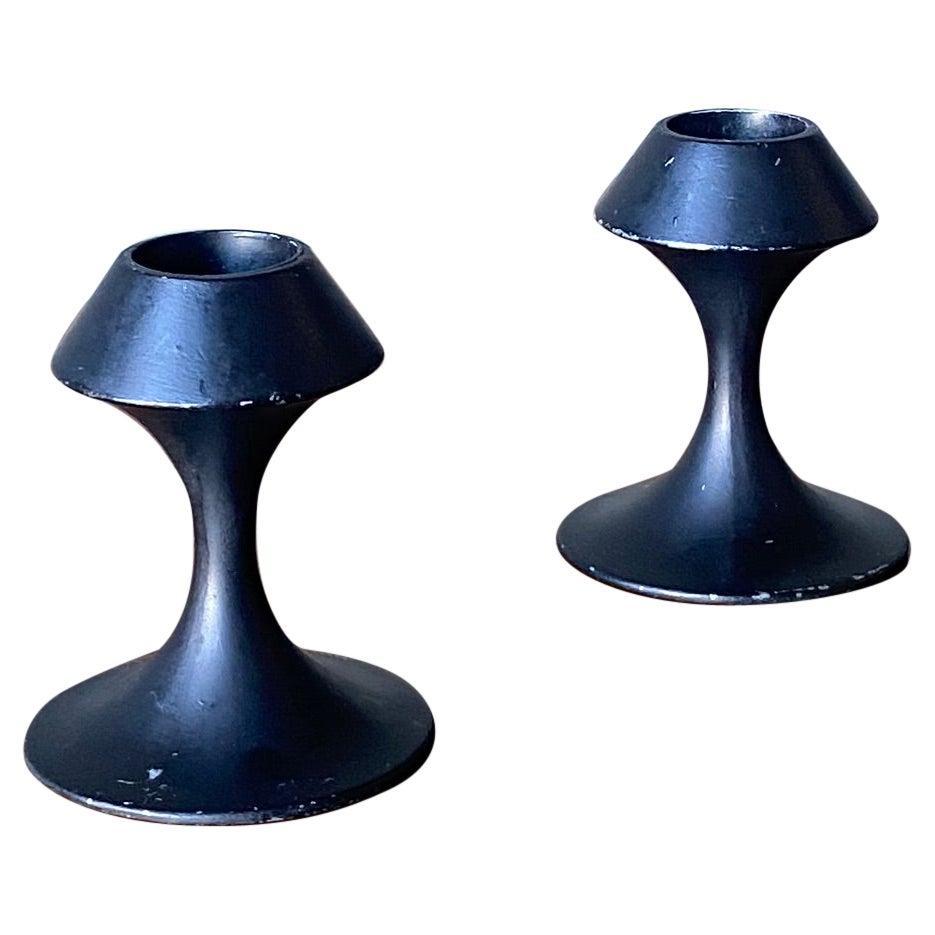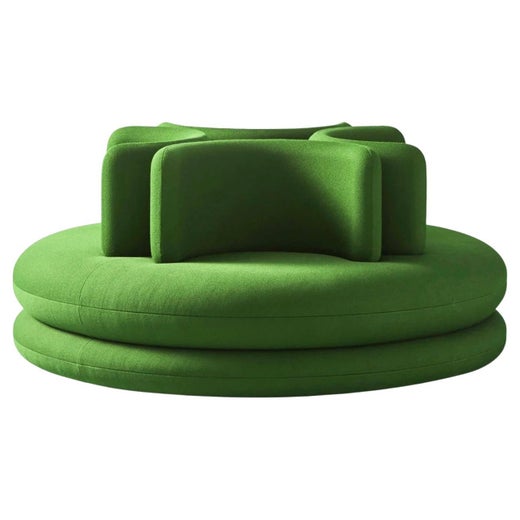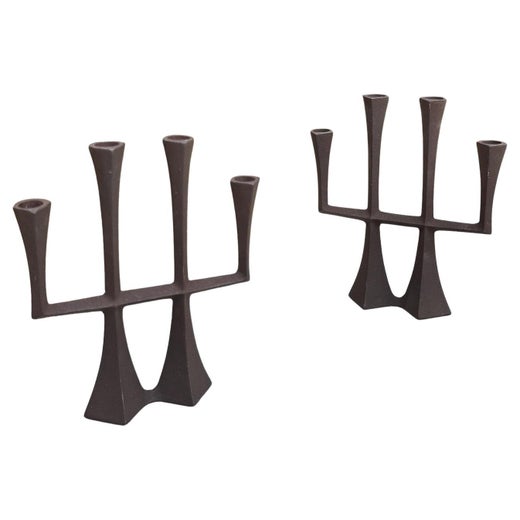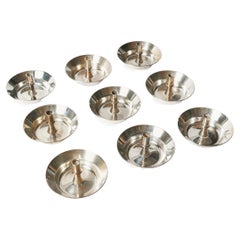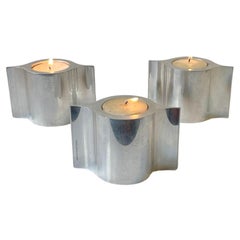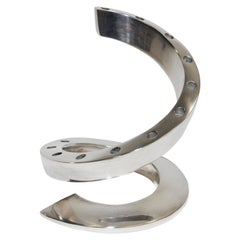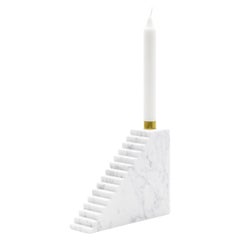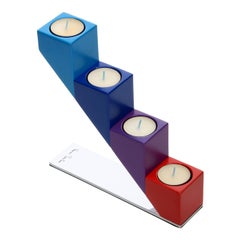
Lighting Stairs Candle Holder by Verner Panton for Pallette Design
View Similar Items
Lighting Stairs Candle Holder by Verner Panton for Pallette Design
About the Item
- Creator:Verner Panton (Designer),Dansk (Manufacturer)
- Dimensions:Height: 7.9 in (20.07 cm)Width: 2 in (5.08 cm)Depth: 7.9 in (20.07 cm)
- Materials and Techniques:
- Place of Origin:
- Period:1990-1999
- Date of Manufacture:1990s
- Condition:9/10 - Excellent vintage condition, minimal signs of usage and age. Original box intact and included. Please see the photos!
- Seller Location:Brondby, DK
- Reference Number:Seller: 172091stDibs: LU4342214777571
Verner Panton
Verner Panton introduced the word “groovy” — or at least its Danish equivalent — into the Scandinavian modern design lexicon. He developed fantastical, futuristic forms and embraced bright colors and new materials such as plastic, fabric-covered polyurethane foam and steel-wire framing for the creation of his chairs, sofas, floor lamps and other furnishings. And Panton’s ebullient Pop art sensibility made him an international design star of the 1960s and ’70s. This radical departure from classic Danish modernism, however, actually stemmed from his training under the greats of that design style.
Born on the largely rural Danish island of Funen, Panton studied architecture and engineering at Copenhagen’s Royal Danish Academy of Fine Arts, where the lighting designer Poul Henningsen was one of his teachers. After graduating, in 1951, Panton worked in the architectural office of Arne Jacobsen, and he became a close friend of Hans Wegner's.
Henningsen taught a scientific approach to design; Jacobsen was forever researching new materials; and Wegner, the leader in modern furniture design using traditional woodworking and joinery, encouraged experimental form.
Panton opened his own design office in 1955, issuing tubular steel chairs with woven seating. His iconoclastic aesthetic was announced with his 1958 Cone chair, modified a year later as the Heart Cone chair. Made of upholstered sheet metal and with a conical base in place of legs, the design shocked visitors to a furniture trade show in Copenhagen.
Panton went on to successive bravura technical feats. His curving, stackable Panton chair, his most popular design, was the first chair to be made from a single piece of molded plastic.
Panton had been experimenting with ideas for chairs made of a single material since the late 1950s. He debuted his plastic seat for the public in the design magazine Mobilia in 1967 and then at the 1968 Cologne Furniture Fair. The designer’s S-Chair models 275 and 276, manufactured during the mid-1960s by August Sommer and distributed by the bentwood specialists at Gebrüder Thonet, were the first legless chairs crafted from a single piece of plywood.
Panton would spend the latter half of the 1960s and early ’70s developing all-encompassing room environments composed of sinuous and fluid-formed modular seating made of foam and metal wire. He also created a series of remarkable lighting designs, most notably his Fun chandeliers — introduced in 1964 and composed of scores of shimmering capiz-shell disks — and the Space Age VP Globe pendant light of 1969.
Panton’s designs are made to stand out and put an eye-catching exclamation point on even the most modern decor.
Find vintage Verner Panton chairs, magazine racks, rugs, table lamps and other furniture on 1stDibs.
Dansk
Ironically, Dansk Designs, the tableware company practically synonymous with Danish design (“Dansk,” in fact, translates to “Danish”), was the brainchild of an American couple, Ted and Martha Nierenberg.
The Nierenbergs, who founded the business in 1954, initially worked out of the garage of their Great Neck, Long Island, home and marketed their serveware, tables, decorative objects and other products largely in the United States. But they had a secret weapon: Jens Quistgaard.
After demonstrating artistic talent at a young age, the Copenhagen native was gifted a forge and anvil so that he could work in his mother’s kitchen. Quistgaard built toys, jewelry and hunting knives under his father’s tutelage. Later, he spent years learning from local artisans how to produce wood, metal, ceramic and glass models. Quistgaard’s career path solidified during his apprenticeship as a silversmith with legendary Danish silver firm Georg Jensen.
The Nierenbergs discovered the sculptor and designer on their honeymoon, which they’d spent traveling through Europe searching for top-quality goods that might form the basis of a business.
After they hired Quistgaard and launched Dansk, their products swiftly came to epitomize the best of accessible Scandinavian design for mid-century American consumers, who fell for the firm’s staved-teak salad bowls, colorful casseroles and stainless-steel flatware, all of which managed to look handmade despite being mass-produced.
The long-distance relationship flourished for 30 years, during which millions of Quistgaard pieces were manufactured in the company's factories.
The designs for Quistgaard’s Købenstyle line and other collections during the mid-1950s were revolutionary, with bowls built like barrels and charming, lightweight monochrome tableware in enameled steel. Quistgaard’s work married function with striking, sophisticated form. He utilized exceptional materials in the creation of his coveted cookware, barware and serving pieces, opting for warm teak and exotic woods and reintroducing steel as a go-to option for kitchen wares.
Quistgaard’s postwar-era Scandinavian modernist work is still exceedingly popular in living rooms, dining rooms and kitchens in the United States, Europe and Japan, particularly in the homes of mid-century design enthusiasts.
Find vintage Dansk Designs furniture and decorative objects on 1stDibs.
You May Also Like
Mid-20th Century Danish Mid-Century Modern Candlesticks
Metal
Vintage 1980s Danish Minimalist Candlesticks
Aluminum
Late 20th Century French Scandinavian Modern Candlesticks
Silver Plate
2010s Spanish Minimalist Candelabras
Marble
Mid-20th Century French Mid-Century Modern Candlesticks
Iron
Mid-20th Century French Mid-Century Modern Candlesticks
Iron
Recently Viewed
View AllRead More
113 Chairs That Prove Danish Design Isn’t Limited to Denmark
In an innovative display, the Designmuseum Danmark is permanently exhibiting the 20th century's most iconic seats.
Verner Panton’s Bold Designs From the 1960s and ’70s Are Showing Up Everywhere
From high-fashion runways to a brand-new book, the groovy, futurist work of this groundbreaking Danish creative is receiving newfound — and much deserved — attention.
